
Language Culture and Curriculum
Scope & Guideline
Pioneering Research in Language, Culture, and Education
Introduction
Aims and Scopes
- Intercultural Communication and Language Learning:
The journal highlights research on how intercultural communication facilitates language learning, especially in multilingual and multicultural settings. It examines the dynamics between language use and cultural identity, fostering an understanding of how learners navigate diverse linguistic environments. - Curriculum Development and Pedagogy:
A core focus is on innovative curriculum design that integrates language and cultural competencies. The journal discusses pedagogical approaches that support language acquisition while promoting cultural awareness and inclusivity. - Multilingualism and Language Policy:
The journal addresses issues related to multilingual education and language policy, analyzing how different educational systems accommodate linguistic diversity and the implications for teaching and learning. - Technology in Language Education:
Research on the role of digital technologies in language education is emphasized, exploring how these tools can enhance language learning and cultural exchange. - Social Justice and Equity in Language Education:
The journal is committed to examining issues of equity and social justice within language education, focusing on marginalized voices and advocating for inclusive practices that support all learners.
Trending and Emerging
- Translanguaging Practices:
There is a growing interest in translanguaging as a pedagogical strategy, emphasizing its role in supporting multilingual learners and enhancing language awareness. This trend reflects a broader recognition of linguistic diversity as a resource in educational contexts. - Digital Technologies and Language Learning:
The integration of digital technologies in language education is increasingly highlighted, showcasing how these tools can facilitate language learning, enhance engagement, and promote intercultural communication among students. - Culturally Responsive Pedagogy:
Research on culturally responsive teaching practices is on the rise, focusing on how educators can create inclusive classrooms that acknowledge and celebrate students' cultural backgrounds, thereby improving educational outcomes. - Social Justice and Language Equity:
There is an emerging trend towards examining social justice issues within language education, advocating for equitable practices that address the needs of marginalized groups and promote linguistic rights. - Intercultural Competence Development:
The journal is increasingly focusing on the development of intercultural competence among language learners, recognizing its importance in preparing students for global citizenship and effective communication in diverse contexts.
Declining or Waning
- Traditional Language Teaching Methods:
There is a noticeable decrease in research centered on traditional language teaching methodologies, as the journal shifts towards more innovative and inclusive pedagogical strategies that emphasize communicative competence and intercultural awareness. - Standardized Language Assessment:
The focus on standardized testing and assessment practices has diminished, reflecting a broader critique of such methods in favor of more holistic and formative approaches to language assessment that consider the learner's cultural and linguistic background. - Monolingual Education Frameworks:
Research that advocates for strictly monolingual education frameworks is less prevalent, as the journal increasingly supports multilingual pedagogies and recognizes the importance of leveraging students' home languages in educational settings.
Similar Journals

Chuzhdoezikovo Obuchenie-Foreign Language Teaching
Empowering Language Educators WorldwideIntroducing Chuzhdoezikovo Obuchenie - Foreign Language Teaching, a prominent journal published by NATSIONALNO IZDATELSTVO AZ BUKI, dedicated to the field of foreign language education. With its ISSN 0205-1834 and E-ISSN 1314-8508, this journal aims to provide a comprehensive platform for researchers, educators, and practitioners to share insightful studies, innovative methodologies, and transformative practices in language teaching. The journal is based in Sofia, Bulgaria and is strategically positioned to contribute to the discourse on language acquisition and pedagogy, targeting a global audience interested in enhancing foreign language competencies. Although specific impact factors and H-index data may be unavailable, the journal's commitment to quality and relevance in the field is evident through its rigorous peer-review process, ensuring that published works meet high academic standards. Emphasizing accessibility and inclusivity, Chuzhdoezikovo Obuchenie invites submissions that reflect contemporary challenges and advancements in language education, making it an essential resource for anyone invested in the future of multilingual instruction.
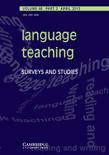
Language Teaching
Transforming language instruction with groundbreaking methodologies.Language Teaching, published by Cambridge University Press, is a premier peer-reviewed journal that has been at the forefront of the linguistics and language education field since its inception in 1969. With an impressive impact factor positioning it in the top tier (Q1) of its category, this journal is ranked 22nd among 1,088 in the Arts and Humanities field and maintains an outstanding 98th percentile ranking. Focusing on innovative research and methodologies in language teaching and learning, Language Teaching provides a vital platform for discussing the latest developments in pedagogy, applied linguistics, and curriculum design. Although it does not offer open access options, it reaches a broad audience of researchers, educators, and practitioners dedicated to enhancing language instruction across various contexts. The journal continues to evolve, with plans to cover emerging trends and challenges in language education until 2024, making it an essential resource for anyone invested in the teaching of languages.

Porta Linguarum
Innovating language studies to enhance pedagogical practices.Porta Linguarum, published by UNIV GRANADA in Spain, is a pioneering journal dedicated to the fields of linguistics and language studies, with a dual focus on the educational implications and applications within these disciplines. Launched in 2008 and continuing its impactful contributions into 2024, the journal is recognized for its rigorous peer-reviewed articles that address contemporary language issues, pedagogical approaches, and linguistic research, evidenced by its notable rankings in the 2023 Scopus metrics. Porta Linguarum holds a distinguished Q1 classification in Linguistics and Language, alongside a respectable Q3 placement in Education, marking it as a valuable resource for academics and practitioners alike. With an impressive ranking of 231 out of 1088 in the Arts and Humanities category and a strong 78th percentile ranking for Language and Linguistics, this journal facilitates the exchange of innovative ideas and promotes scholarly discourse. Although currently not adopting an open access model, it remains an essential platform for advancing knowledge in linguistics and education.
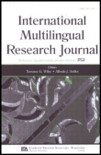
International Multilingual Research Journal
Bridging cultural contexts through cutting-edge language research.The International Multilingual Research Journal, published by Routledge Journals, Taylor & Francis Ltd, is a leading platform for the dissemination of innovative research in the fields of Education and Linguistics. With an impact factor reflecting its rigorous academic standards and a Q1 ranking in both relevant categories, this journal is dedicated to advancing the understanding of multilingualism and its implications globally. It serves as an essential resource for researchers, educators, and practitioners who seek to explore the complexities of language and learning across diverse cultural contexts. Since its inception in 2010, the journal has converged a wealth of scholarly articles that address contemporary issues in language use and pedagogical practices. The journal adheres to the highest research integrity standards and promotes open dialogue among scholars, making it a vital tool for those engaged in this expanding field. With its strong positioning in prestigious databases like Scopus, the International Multilingual Research Journal is committed to enriching the academic community and fostering interdisciplinary collaborations.

Language Awareness
Championing Scholarly Discourse in LinguisticsLanguage Awareness is a leading academic journal published by Routledge Journals, Taylor & Francis Ltd, focusing on the intersection of language, education, and linguistic theory. Since its inception in 1992, this esteemed journal has provided a platform for scholarly discourse and research advancement, boasting a strong impact within its field, as indicated by its Q1 quartile rankings in both Education and Linguistics and Language as of 2023. The journal's commitment to promoting awareness and understanding of language use in diverse contexts is highlighted through rigorous peer-reviewed articles that cater to researchers, practitioners, and educators. With an impressive positioning in various Scopus categories—ranking 95th in Arts and Humanities, and 111th in Social Sciences—it ensures access to high-quality research that influences both pedagogy and linguistic methodologies. Although it does not offer Open Access options, its content remains essential for those passionate about linguistic research and educational innovation.
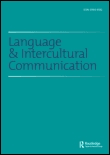
Language and Intercultural Communication
Bridging Cultures Through Language InsightsLanguage and Intercultural Communication is a leading peer-reviewed journal published by Routledge Journals, Taylor & Francis Ltd, based in the United Kingdom. With an ISSN of 1470-8477 and an E-ISSN of 1747-759X, this esteemed publication has established itself as a vital resource in the fields of Communication and Linguistics, boasting an impressive Q1 classification in both categories as of 2023. The journal's scope encompasses a broad range of topics related to language and its role in intercultural contexts, making it an essential platform for researchers, professionals, and students alike who wish to contribute to and learn from the latest scholarly discussions. Even without an open-access option, its high impact factor and strong Scopus rankings, which place it in the 87th percentile for Linguistics and Language, affirm its significance in shaping contemporary dialogue. As we move towards 2024, Language and Intercultural Communication continues to foster academic exchanges that challenge, expand, and enrich understanding across diverse linguistic and cultural landscapes, making it a must-read for anyone interested in the intersection of language and culture.
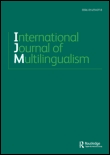
International Journal of Multilingualism
Advancing the frontiers of multilingual research.Welcome to the International Journal of Multilingualism, a leading platform dedicated to advancing the field of linguistics and language studies. Established by ROUTLEDGE JOURNALS, TAYLOR & FRANCIS LTD and housed in the United Kingdom, this journal has rapidly ascended to a prestigious Q1 quartile status in both the Linguistics and Language categories as of 2023, ranking in the top 4% across related disciplines. With a remarkable Scopus ranking of #35 in Arts and Humanities and #38 in Social Sciences, it is recognized for publishing high-quality, impactful research that spans a diverse array of multilingual topics. The journal thrives on its commitment to examining the complexities and dynamics of multilingualism in contemporary society, making it an essential resource for researchers, professionals, and students alike. Although Open Access options are not currently available, the journal's rigorous peer-review process ensures that each publication contributes valuable insights into the field. Since its inception in 2004, the International Journal of Multilingualism continues to foster academic discourse and innovation, solidifying its role as a crucial outlet for scholarly work by 2024 and beyond.

Cuadernos de Linguistica Hispanica
Fostering Scholarly Discourse in LinguisticsCuadernos de Linguistica Hispanica is a distinguished open access journal published by UNIV PEDAGOGICA & TECNOLOGICA COLOMBIA, dedicated to advancing research in the field of linguistics and language studies since its inception. With an ISSN of 0121-053X and E-ISSN 2346-1829, this journal has established itself as an important platform for scholars to share innovative findings and insights within the linguistics community. As a Q3-ranked journal in linguistics and language according to 2023 category quartiles, it occupies a significant position in Scopus rankings, showcasing its commitment to quality and relevance. With the aim to foster scholarly discourse and promote understanding of the Hispanic linguistic landscape, the journal welcomes contributions that explore a diverse range of topics and methodologies. The journal has embraced open access since 2008, ensuring that research is accessible to a broader audience, thus enhancing its impact and engagement within both academic and professional spheres.
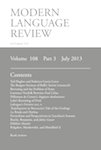
MODERN LANGUAGE REVIEW
Cultivating Knowledge in Linguistic and Literary ContextsMODERN LANGUAGE REVIEW, published by the Modern Humanities Research Association, is a pivotal academic journal based in the United Kingdom, focusing on the fields of linguistics, literature, and literary theory. With an ISSN of 0026-7937 and an E-ISSN of 2222-4319, this journal serves as a platform for disseminating research that explores the nuances of language and its literary contexts. Although currently not an open-access publication, it provides valuable insight into a range of topics, contributing to a deeper understanding of human communication and expression. Covering a wide scope with a publication history from 2002 to 2024, the journal is indexed in Scopus and holds a Q4 ranking in both linguistics and literature categories, indicating its emerging influence within these academic disciplines. As the landscape of humanities research continues to evolve, MODERN LANGUAGE REVIEW remains a vital resource for scholars, professionals, and students aiming to engage with contemporary debates and developments in language and literature.

Deutsch als Fremdsprache-Zeitschrift zur Theorie und Praxis des Faches Deutsch als Fremdsprache
Elevating Standards in German Language InstructionDeutsch als Fremdsprache-Zeitschrift zur Theorie und Praxis des Faches Deutsch als Fremdsprache is a prominent academic journal published by ERICH SCHMIDT VERLAG in Germany, focused on advancing the field of German as a foreign language. With an ISSN of 0011-9741 and E-ISSN of 2198-2430, this journal has carved out a significant niche in linguistics and language education, reflecting its robust academic rigor as indicated by its ranking in the Q2 in Linguistics and Language and Q3 in Education quartiles for 2023. It occupies an important role in disseminating research, practical methodologies, and theoretical insights that contribute to the improvement of German language instruction globally. While it is not an open-access journal, its influence is bolstered by comprehensive reviews and scholarly contributions that are essential for researchers, educators, and students alike. With a history of converged years from 2013 to 2024, this journal remains a vital resource for those interested in the theoretical and practical aspects of teaching and learning German.